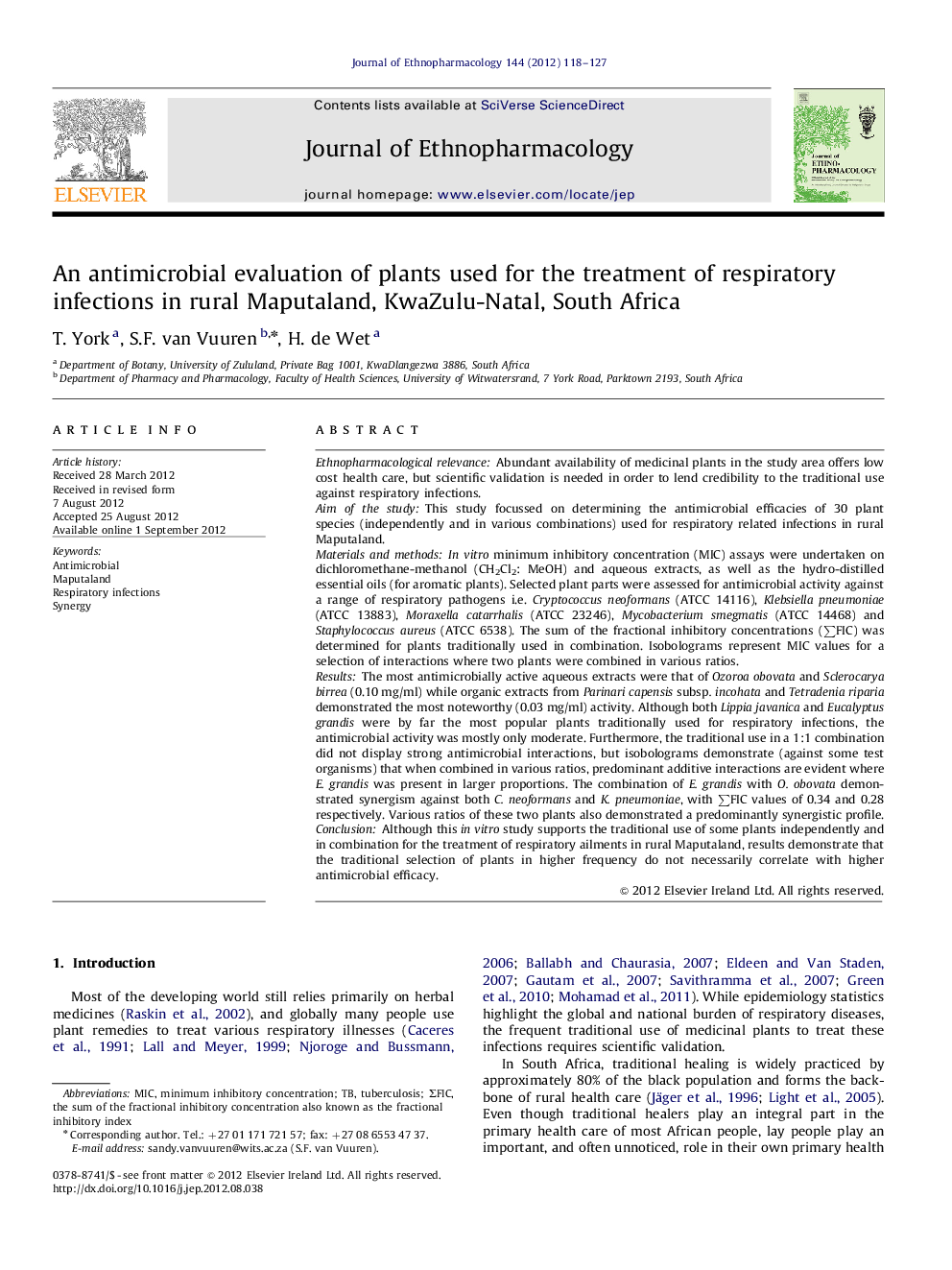| کد مقاله | کد نشریه | سال انتشار | مقاله انگلیسی | نسخه تمام متن |
|---|---|---|---|---|
| 2545564 | 1123964 | 2012 | 10 صفحه PDF | دانلود رایگان |

Ethnopharmacological relevanceAbundant availability of medicinal plants in the study area offers low cost health care, but scientific validation is needed in order to lend credibility to the traditional use against respiratory infections.Aim of the studyThis study focussed on determining the antimicrobial efficacies of 30 plant species (independently and in various combinations) used for respiratory related infections in rural Maputaland.Materials and methodsIn vitro minimum inhibitory concentration (MIC) assays were undertaken on dichloromethane-methanol (CH2Cl2: MeOH) and aqueous extracts, as well as the hydro-distilled essential oils (for aromatic plants). Selected plant parts were assessed for antimicrobial activity against a range of respiratory pathogens i.e. Cryptococcus neoformans (ATCC 14116), Klebsiella pneumoniae (ATCC 13883), Moraxella catarrhalis (ATCC 23246), Mycobacterium smegmatis (ATCC 14468) and Staphylococcus aureus (ATCC 6538). The sum of the fractional inhibitory concentrations (∑FIC) was determined for plants traditionally used in combination. Isobolograms represent MIC values for a selection of interactions where two plants were combined in various ratios.ResultsThe most antimicrobially active aqueous extracts were that of Ozoroa obovata and Sclerocarya birrea (0.10 mg/ml) while organic extracts from Parinari capensis subsp. incohata and Tetradenia riparia demonstrated the most noteworthy (0.03 mg/ml) activity. Although both Lippia javanica and Eucalyptus grandis were by far the most popular plants traditionally used for respiratory infections, the antimicrobial activity was mostly only moderate. Furthermore, the traditional use in a 1:1 combination did not display strong antimicrobial interactions, but isobolograms demonstrate (against some test organisms) that when combined in various ratios, predominant additive interactions are evident where E. grandis was present in larger proportions. The combination of E. grandis with O. obovata demonstrated synergism against both C. neoformans and K. pneumoniae, with ∑FIC values of 0.34 and 0.28 respectively. Various ratios of these two plants also demonstrated a predominantly synergistic profile.ConclusionAlthough this in vitro study supports the traditional use of some plants independently and in combination for the treatment of respiratory ailments in rural Maputaland, results demonstrate that the traditional selection of plants in higher frequency do not necessarily correlate with higher antimicrobial efficacy.
Figure optionsDownload high-quality image (348 K)Download as PowerPoint slide
Journal: Journal of Ethnopharmacology - Volume 144, Issue 1, 31 October 2012, Pages 118–127